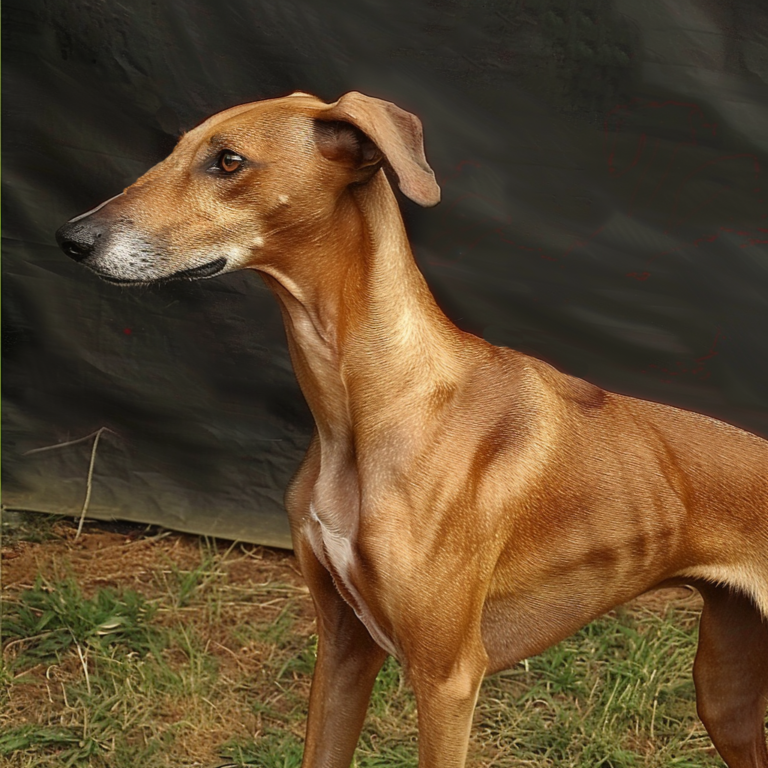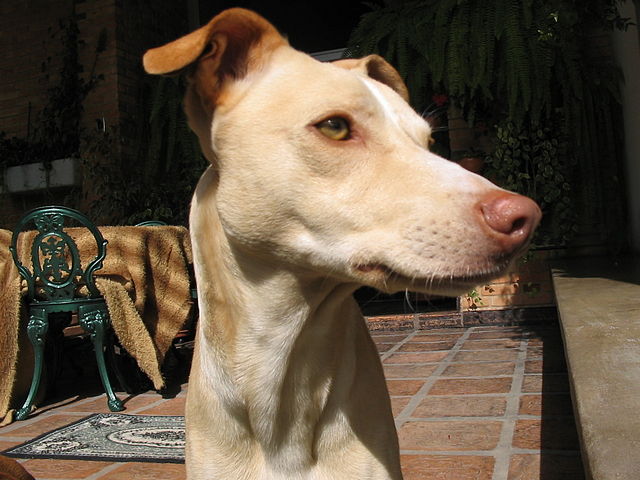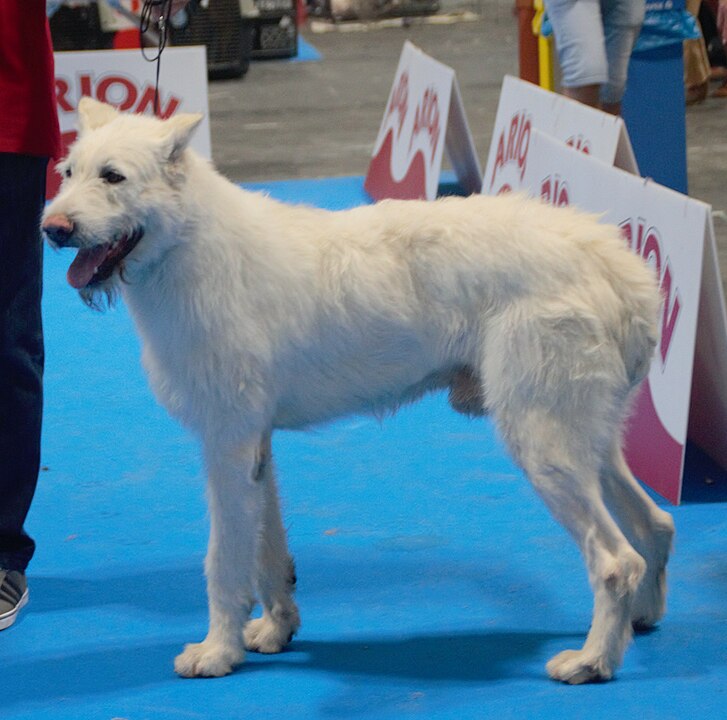The Spanish Greyhound, also known as the Galgo Espanol, is actually an ancestor of the English Greyhound (AKA the Greyhound that we all know and love). This explains the close similarity in appearance. Spanish Greyhounds were developed back in the Middle Ages and used primarily to hunt rabbit but would occasionally hunt other game as well. They are a typical sighthound, being very quiet and calm in the house and possessing gentle, easy-going temperaments. They are affectionate but in a soft and unassuming way, this isn’t a boisterous dog that will knock you over when excited.
The Spanish Greyhound usually gets along well with other dogs – even small ones, as well as cats. They also do well in homes with children although interactions with small kids should be supervised to make sure the dog doesn’t get hurt as they will not retaliate at rude behavior. Make sure to socialize this breed early on as they can be shy and easily frightened without early socialization. Their typical demeanor is calm and reserved but outright scared behavior is not normally seen unless they were not taken out into the world when young. Either way, this isn’t a watch dog or a guard dog as they rarely bark and aren’t territorial or protective.
Spanish Greyhounds actually come in two coat varieties – the smooth and the wire. This is one of the main differences between them and their English counterparts. Other distinctions include having flatter muscles (unlike the bulging leg muscles seen in their cousin), being generally lighter and smaller (although still a large dog) and the fact that they should be higher in the rear than in the front. Furthermore the chests are more shallow, their muzzles longer and their tails are often lengthier as well.
The low body weight of the Spanish Greyhound necessitates a coat in cold weather, particularly for the short-haired variety. Other than this, it is a hardy and healthy breed without very many inherited health conditions. Average lifespan is 10-13 years. These hounds are very adaptable to a number of different lifestyles including apartment living when given regular exercise. With a daily walk and/or a jaunt in a fenced area, they turn into lazy couch potatoes for the rest of the day. Another plus is their minimal grooming needs, which makes them very easy to care for overall! 
While Spanish Greyhounds make fantastic pets, they can also participate successfully in plenty of dog sports. Racing, lure coursing and the conformation ring all offer opportunities for these sighthounds to compete; although in the United States they are still considered a rare breed and numbers are low in all forms of competition. The breed has much more of a presence in their native Spain, particularly with hunting dogs. This said, in Spain sadly there are many instances of animal cruelty toward this breed when they outgrow their usefulness to hunt, resulting in the death of tens of thousand per year. Several associations exist in Spain to re-home ex-hunters but as of this writing, there are no laws in Spain against animal cruelty toward the Galgo (which are regarded as property rather than pets). Surely something must be done in order to rectify these horrible practices, and bring justice to the dogs!
When it comes to training, most Spanish Greyhounds will work for food! Some will also work well when training is made into a game, as they enjoy playing. They can be biddable when training is enthusiastic, with short sessions that are fair. They learn quickly when conditions are right, however it may take awhile for them to become consistent with commands. Sighthounds in general tend to be fairly independent and “softer” in temperament than other dogs, which means that they can’t be trained in the same way as the typical Lab.
Like all breeds, Spanish Greyhounds are not without their faults, however. They can be counter surfers and are expert food-stealers. They will also chase small animals, both wild and domesticated, when outside (even if they get along with inside cats). This means that they must always be kept on leash or in a fenced area – a real 6 foot fence as invisible fences don’t work on them. Finally, some suffer from separation anxiety when away from their families for stretches of time. For many owners, their many virtues far outweigh their shortcomings and overall, this is a wonderful and beautiful pet.



